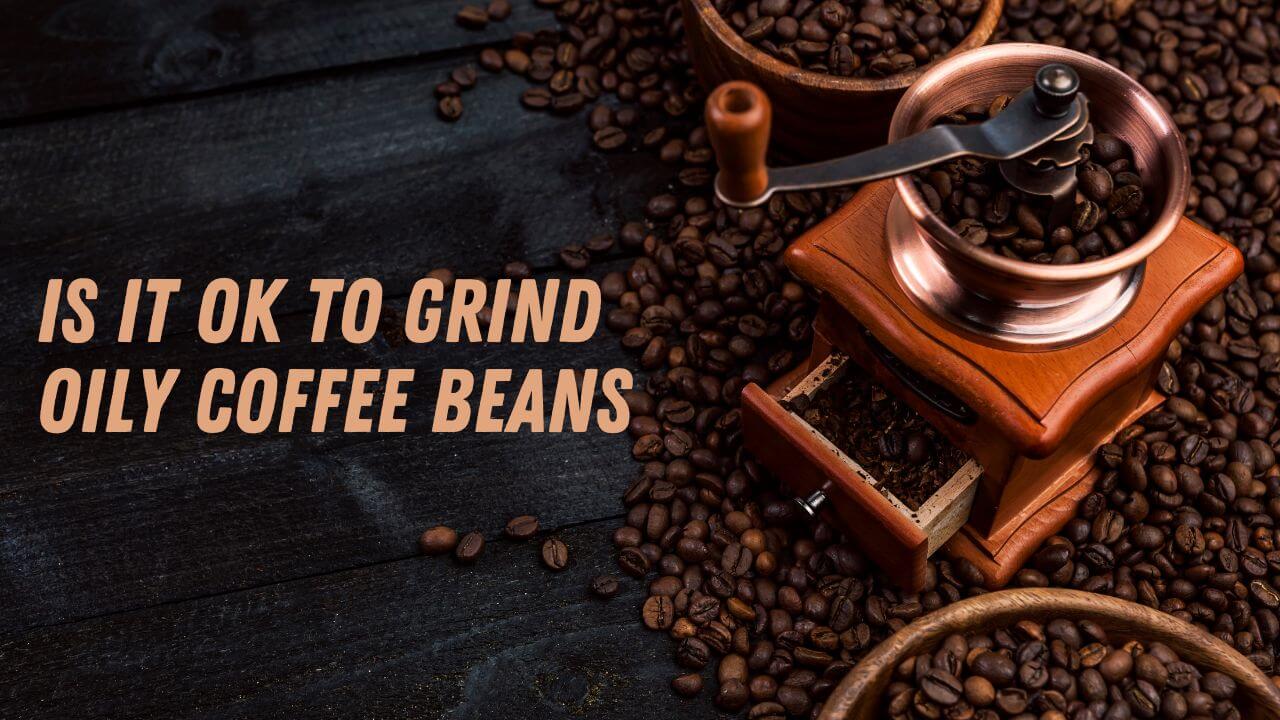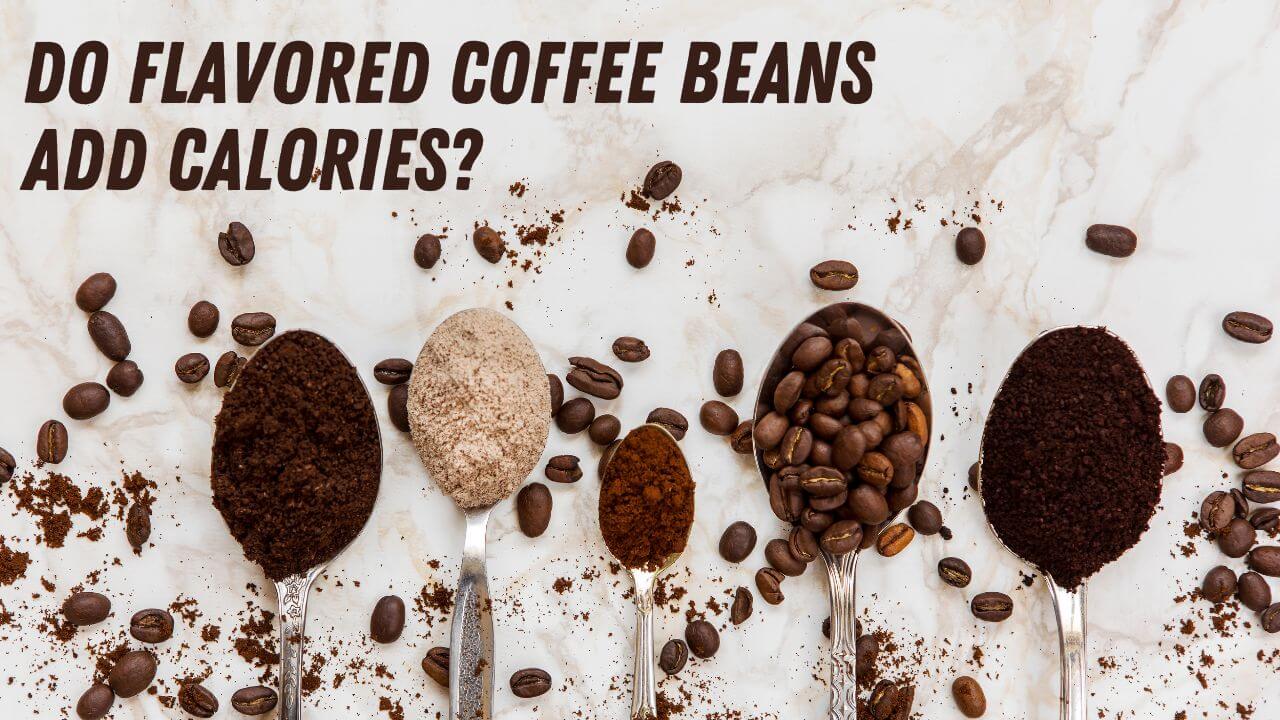Grinding coffee beans is an important step in the coffee-making process. But what if you’re grinding oily beans? Is it OK to do so?
It can be hard to know for sure, but there are a few guidelines to help you out. In this article, we’ll explore whether it’s safe and beneficial to grind oily coffee beans. We’ll look at the potential benefits, as well as any drawbacks that may come with grinding oily beans.
So, let’s dive into the details and see what we can learn!
What Are Oily Coffee Beans?
Oily coffee beans are those that have been roasted for a longer period of time. This causes the beans to become darker, more flavorful, and more oily than regular coffee beans.
When ground, these oily beans produce an extra strong brew with intense flavor. The oils released from the grinding process add to the flavor of the coffee, while also providing a unique texture. This can mean a stronger and richer cup of coffee than what one might get with regular beans.
However, grinding oily coffee beans can be problematic because they will clog up grinders quickly and require regular cleaning and maintenance in order to ensure good performance.
The Benefits Of Grinding Oily Coffee Beans
Grinding your own coffee beans can be an incredibly rewarding experience, and it’s even better when you have access to some of the most flavorful beans on the market. Oily coffees are known for their boldness, richness and complexity, making them a great choice for those who want to get the most out of their morning cup. But why should you grind oily coffee beans?
In this article, we’ll explore the unique benefits they offer. When it comes to grinding oily coffee beans, it’s important to use the right equipment that can handle their texture. Using a burr grinder instead of a blade grinder allows for more consistent grounds that will help you get a richer flavor from your brew.
Additionally, grinding your beans just before brewing ensures maximum freshness and potency. This is especially important with oily beans which tend to lose flavor quickly after being ground. The bold flavor and complex aromas of dark-roasted oily coffee make it perfect for espresso and other robust drinks like cappuccinos or lattes.
By grinding these types of beans yourself at home, you get maximum control over the size of your grinds and how strong your drink is overall. Not only that, but you also get more bang for your buck since freshly ground coffee has higher caffeine content than pre-ground varieties! So if you’re looking for intense flavors and maximum freshness in each cup, grinding your own oily coffee is definitely worth trying out!
With the right equipment and technique, you can enjoy barista-level results in no time at all.
The Drawbacks Of Grinding Oily Coffee Beans
Grinding oily coffee beans certainly has its benefits, but it’s important to consider the potential drawbacks as well.
One of the most significant drawbacks is that ground coffee is much more likely to go stale quickly. The oils found in some types of beans can cause them to start going bad faster than other types of beans. This can be especially problematic if you’re not going to be using the grounds right away.
Another issue with grinding oily beans is that they tend to clump together and stick to your grinder blades. This can make it difficult to get a consistent grind and may require you to clean your grinder more often than normal. It can also increase the wear and tear on your grinder over time, which means it may need to be replaced sooner rather than later.
Finally, grinding oily coffee beans will usually create a messier grind than other types of beans. Since the oil content is higher, it can produce a lot of dust and residue while grinding which could end up in your cup or on your countertop. For this reason, it’s important to take extra precautions when grinding these types of beans such as using an airtight container and wiping down any surfaces afterwards.
Tips For Grinding Oily Coffee Beans
Brewing coffee is an art – but what if you’ve got oily beans? Grinding oily coffee beans can be tricky; the oils that give these beans their flavor can easily gum up your grinder, leaving a sticky mess. If you’re looking to brew with these unique beans without the hassle, here are some tips for grinding them successfully.
Start by ensuring your grinder is clean and dry. Oils from previous batches of coffee can mix with new ones and create a sticky mess. If you have a burr grinder, also make sure to clean it regularly since oils tend to stick in its ridges.
When grinding oily beans, set your grinder on the finest setting possible. Finer grounds will help extract more flavor from the beans and reduce oiliness in your cup of joe. Additionally, if you have a blade grinder, grind in short bursts rather than one long session as this helps reduce heat build-up which can also increase oiliness in the cup.
Finally, don’t forget to use fresh water when brewing! Pre-heating your water is recommended as it helps maximize taste extraction from the oils in the beans.
With these simple tips, you’ll be able to brew delicious cups of coffees with oily beans without any hassle!
Alternatives To Grinding Oily Coffee Beans
Grinding oily coffee beans can be a tricky process, and it’s important to consider the potential risks before attempting it. Oily coffee beans can clog up grinders, making them difficult to use, and the oils can also spoil quickly, leading to a bitter taste. Furthermore, the oiliness of the beans can cause them to slip through grinders more easily, resulting in inconsistent grounds.
Fortunately, there are several alternatives to grinding oily coffee beans that can ensure quality results.
Pre-ground coffees are readily available in most grocery stores and specialty coffee shops, as well as online retailers. Additionally, some brands offer pre-ground coffee that is specifically designed for espresso machines or French presses. This pre-ground coffee is often ground finer than average coffee and has been roasted with espresso or French press brewing methods in mind.
For those looking for a more hands-on approach but who don’t want to risk grinding oily beans, blade grinders are an option worth considering. These grinders use blades instead of burrs to chop the beans into pieces and provide a consistent grind size without the need for cleaning after each use like burr grinders do. Blade grinders are also generally less expensive than burr grinders due to their simpler design.
Whichever option you choose for your morning cup of joe, you’ll be sure to find something that fits your needs perfectly!
Conclusion
Grinding oily coffee beans can be a great way to get the most out of your coffee. It’s not for everyone though, and if it doesn’t work for you, there are plenty of other options.
There’s no right or wrong way to make coffee – it all comes down to personal preference and what works best for you. If you’re willing to take a bit of extra time and care into grinding your own beans, you may find that oily coffee beans produce a stronger, richer cup of joe than regular ones.
Ultimately, it’s up to you. Try something new and see what works best!





